Maiky76
Senior Member
@amirm are you sure about the EQ settings?This is a review, listening tests and measurements of the RSL CG25 center home theater speaker. It is on kind loan from a member and costs US $425.
View attachment 268368
This is an unusual design in that the port goes through a path in the back which kind of resembles a very short/truncated transmission channel. Otherwise we have the usual MTM configuration of dual mid-woofers and tweeter. Not much to see on the back other than the useful threaded insert for mounting it to the wall:
View attachment 268369
Build quality seems good with nice finish and reasonable weight and solidity.
I was contacting the company regarding another product so while I was at it, I asked them to review the frequency response measurements. They are generally in agreement with the results you are about to see.
Speaker was tested in horizontal configuration as you see above. Reference axis was that of tweeter.
RSL CG25 Center Speaker Measurements
As usual we start with our anechoic frequency response measurements:
View attachment 268370
At first glance, the on-axis response looks quite bad. But stepping back, the bass/mid-range simply has too much output. And we have a single resonant peak around 4.6 kHz. We can see the reason for both in the near-field, non-anechoic response of the drivers and port:
View attachment 268371
The unusual port design is extending the output all the way up to 500 Hz. The are resonances after that but levels are rather low. Woofers nicely roll off.
Predicted in-room response and early window reflections are messy due to above factors:
View attachment 268372
View attachment 268373
MTM configurations cause the dual drivers to "beam" and as such, lose their side energy at certain frequencies and we see that here as well:
View attachment 268374
Some really get narrow and this one looks a bit wider than normal which is good:
View attachment 268375
Vertical directivity is wide so if you use the speaker vertically, you don't have this issue:
View attachment 268376
The dual drivers plus wideband port response helps a lot with distortion in bass:
View attachment 268377
View attachment 268378
We do have distortion where the resonance was. So to the extent we reduce that peak with EQ, we can also put a bandage on that.
Impedance is typical at 4.2 ohm:
View attachment 268379
Here are the waterfall and step responses:
View attachment 268380
View attachment 268381
RSL CG25 Speaker Listening Tests
Objective measurements do not prepare you well for what you first hear from this speaker. First impression is authoritative bass with good balance with highs! I know, how could that be? Well, my first track is always a female track where some bass adds warmth. But where is the high coming from? Well, it is the resonance we have seen in the measurements. I took that down first with EQ and now the tonality shifted to too much bass:
View attachment 268382
I then worked backwards and put in the shelving filter to lower the bass, and fill the hole in that region. I then performed and AB and you now much more clearly heard how much extra bass there was without EQ.
With EQ, the performance was superb! This one small speaker could pump out power no matter how loud I cranked my 500+ watt amplifier! The sound was clean, with nice impactful bass and super satisfying! I dare say it was one of the best sounding center speakers I have tested!!!
Mind you, there is not much support for sub-bass but what is there is just a tad distorted. Many small speakers produce highly distorted response there.
Conclusions
One of the benefits of a center speaker is that you almost know that it will be used in a home theater situation with EQ. So why not design it with extra bass response and have the EQ fix that as needed? That seems to be at play here with CG25. With over 90 dB sensitivity in bass and midrange region, you have plenty of dynamic range in reserve. Bring the level down and you reduce distortion. Sure, there is a resonant peak in treble but interestingly, that provided some balanced to extra bass in case someone uses it without EQ.
So what we have here is a design that on purpose (per company) deviates from neutral response, but in a beneficial way when equalized. I always wondered about such an approach: not wasting sensitivity in a speaker and letting it produce the most of what it can, and then fixing with EQ.
For a center speaker where so much energy is directed at in movies, the overall picture is quite positive, pun intended.
I am happy to recommend the RLS CG25 with equalization where it produces superb fidelity and ability to play incredibly loud.
------------
As always, questions, comments, recommendations, etc. are welcome.
Any donations are much appreciated using: https://www.audiosciencereview.com/forum/index.php?threads/how-to-support-audio-science-review.8150/
In particular the 410Hz peak, I mean if you tried to compensate the suck out it is more like at 555Hz...
Here is my take on the EQ.
Please report your findings, positive or negative!
The following EQs are “anechoic” EQs to get the speaker right before room integration. If you able to implement these EQs you must add EQ at LF for room integration, that is usually not optional… see hints there: https://www.audiosciencereview.com/...helf-speaker-review.11144/page-26#post-800725
The raw data with corrected ER and PIR:
Score no EQ: 2.9
With Sub: 5.0
Spinorama with no EQ:
- too many issues to list...
Directivity:
Horizontal: stay in front of the tweeter
Vertically +/-10deg
EQ design:
I have generated one EQ. The APO config file is attached.
- The second, labelled Score, starts with the first one and adds the score as an optimization variable.
- The EQs are designed in the context of regular stereo use i.e. domestic environment, no warranty is provided for a near field use in a studio environment although the LW might be better suited for this purpose.
with sub: 4.7
Score EQ Score: 5.2
with sub: 7.2
Code:
RSL CG25 APO EQ Score 96000Hz
March012023-140858
Preamp: -1.9 dB
Filter 1: ON HPQ Fc 37.60, 0.00, 0.99
Filter 2: ON PK Fc 167.78, -5.74, 0.73
Filter 3: ON PK Fc 355.56, -3.57, 1.76
Filter 4: ON PK Fc 723.34, -4.00, 5.45
Filter 5: ON PK Fc 896.43, -3.21, 4.28
Filter 6: ON PK Fc 1387.11, 3.02, 0.52
Filter 7: ON PK Fc 2443.80, -3.26, 1.51
Filter 8: ON PK Fc 4615.23, -5.80, 5.04
Filter 9: ON PK Fc 5603.74, 2.73, 6.72Spinorama EQ Amirm
Spinorama EQ Score
Zoom PIR-LW-ON
Regression - Tonal
Radar no EQ vs EQ score
Nice improvements but start from low...
The rest of the plots is attached.
Attachments
-
RSL CG25 APO EQ Score 96000Hz.txt473 bytes · Views: 26
-
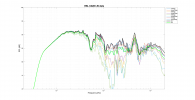 RSL CG25 LW data.png190 KB · Views: 33
RSL CG25 LW data.png190 KB · Views: 33 -
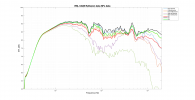 RSL CG25 Reflexion data.png152.9 KB · Views: 23
RSL CG25 Reflexion data.png152.9 KB · Views: 23 -
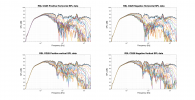 RSL CG25 Raw Directivity data.png500.5 KB · Views: 28
RSL CG25 Raw Directivity data.png500.5 KB · Views: 28 -
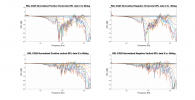 RSL CG25 Normalized Directivity data.png334.2 KB · Views: 22
RSL CG25 Normalized Directivity data.png334.2 KB · Views: 22 -
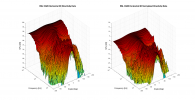 RSL CG25 3D surface Horizontal Directivity Data.png431 KB · Views: 21
RSL CG25 3D surface Horizontal Directivity Data.png431 KB · Views: 21 -
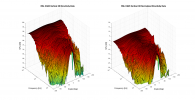 RSL CG25 3D surface Vertical Directivity Data.png433.4 KB · Views: 27
RSL CG25 3D surface Vertical Directivity Data.png433.4 KB · Views: 27 -
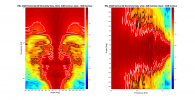 RSL CG25 2D surface Directivity Contour Data.png328.2 KB · Views: 32
RSL CG25 2D surface Directivity Contour Data.png328.2 KB · Views: 32
